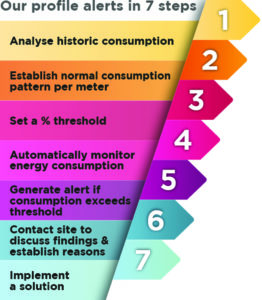In this sponsored post, STC outlines how to mitigate the impact of changes to distribution charges coming into force in next April.
From April 2018 the new regulatory change from Ofgem, DCP 228, will alter the way in which electricity distribution charges are calculated. This will affect the way business properties are billed. Distribution charges currently account for up to 19% of your bill. As a result, you may look to re-examine the times at which you use energy in order to reduce costs.
The main distribution charge is DUoS (Distribution Use of System) which correlates to usage and is calculated using a Red, Amber and Green banding system. The aim of DCP 228 is to revise how DUoS charges are calculated, so they accurately reflect the costs incurred by network operators during peak and non-peak periods.
The change will also affect Common Distribution Charging Methodology (CDCM) and how customer tariffs are set. Under the existing CDCM structure, energy consumed during DUoS Red Band (peak) periods is priced much higher than during either Amber or Green (non-peak) periods. However, the new change will mean that charges will be lowered during Red Band periods, and raised during Amber and Green. This will essentially flatten the charging structure, creating more of a balance across the bands.
How will your business be affected?
All businesses will be affected by DCP 228, excluding the UK’s larger electricity connectors, whose charges are governed by the Extra High Voltage Distribution Charging Methodology.
For many half-hourly businesses, DCP 228 will mean a rise in energy costs. However, those with a high use at peak times may see a small decrease on their bills. The level of impact will be based on your region and DNO (Distribution Network Operator).
How can I monitor these effects and reduce impact?
Monitoring when your business is using the most energy is the first step to reducing consumption when tariff rates are at their highest. The next step is ensuring that you have the right data at your fingertips. STC Energy’s profile alerts service helps you to use this data to identify opportunities to reduce consumption. This service uses intuitive software that can automatically detect unusual patterns of energy consumption in half-hourly profile data and issue alerts allowing action to be taken.

The system has three stages:
- Analysing data to produce appropriate profile targets
- Monitoring consumption against target and detecting exceptions
- Issuing profile alerts
Profile alerts are an intuitive way to combat energy waste and other exceptional consumption. Profile alerts are successful in identifying energy waste directly and in suggesting behavioural changes that can be implemented to reduce wastage.
Profile alerts work for both small and large multi-sites that use HH, AMR electricity meters and data loggers, providing great cost saving and efficiency opportunities.
Case study – Superdrug
Using our profile alerts service, STC has helped reduce energy waste and save costs for several large multi-site organisations. One customer, Superdrug, saved £230K by successfully rolling out AMR meters estate wide and using half-hourly data to monitor energy consumption.
To find out more, visit stcenergy.com.
Related stories:
What are you going to do with all that data?
PPI for utility bills: How to recover the millions firms are due from suppliers
DCP161: Firms that exceed allocated electricity capacity could pay triple
Profile alerts stop energy waste
Click here to see if you qualify for a free subscription to the print magazine, or to renew.
Follow us at @EnergystMedia. For regular bulletins, sign up for the free newsletter.



